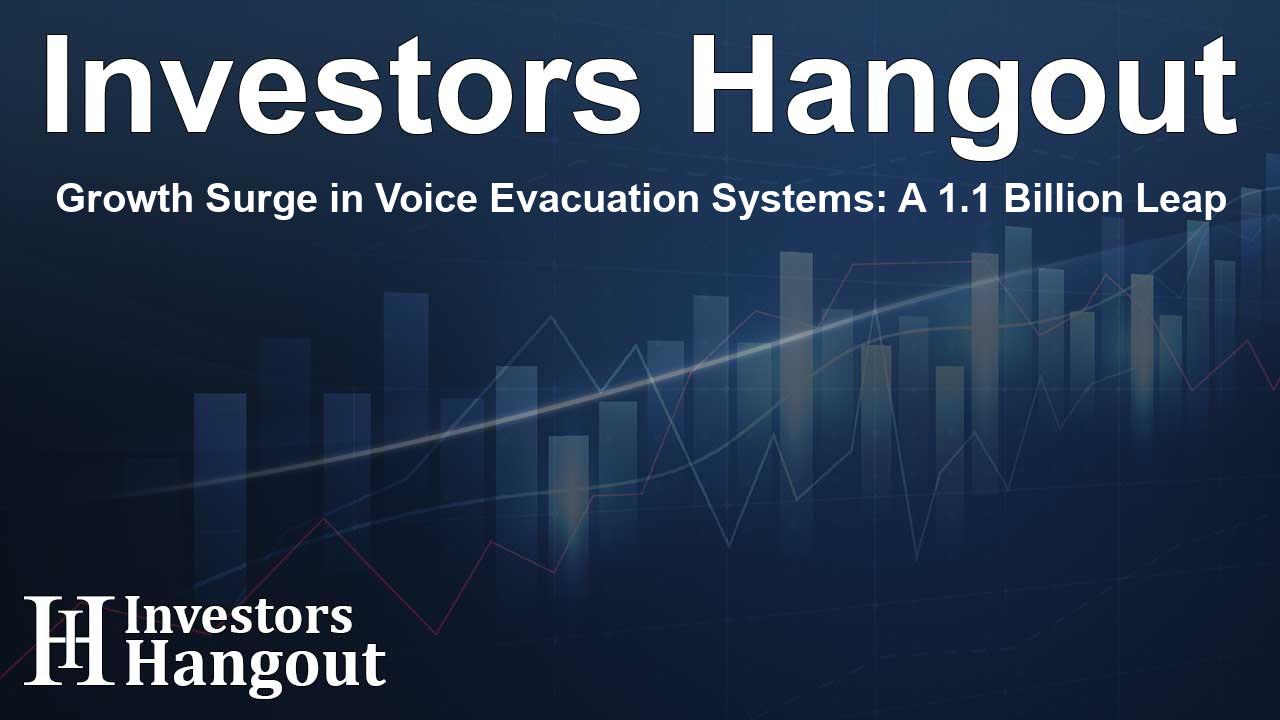Growth Surge in Voice Evacuation Systems: A 1.1 Billion Leap

Exploring the Voice Evacuation Systems Market Growth
The voice evacuation systems market is poised for remarkable growth, with an estimated increase of USD 1.1 billion from 2024 to 2028. This insightful forecast sheds light on how the real estate and construction industries are pivotal in driving this advancement. The market anticipates a compound annual growth rate (CAGR) of 16.84% during this projected period, signifying expanding interest from various sectors.
Market Drivers Fueling Expansion
The increasing adoption of voice evacuation systems is primarily fueled by their efficacy in enhancing safety in various environments including public facilities, commercial buildings, and healthcare institutions. These systems utilize clear spoken messages to guide individuals during emergencies, ensuring calm and orderly evacuations, which traditional alarms fail to deliver. Entities are increasingly aware of the need for such cohesive communication systems, thereby fostering growth.
The Role of Technology in Evacuation Systems
Modern advancements in technology, especially the integration of Internet of Things (IoT) capabilities, are transforming voice evacuation systems. By allowing interconnected devices to share information effortlessly, these systems now offer enhanced data management, rapid response times, and efficient notifications. The development of mesh networks strengthens this connectivity, minimizing redundancy and enhancing the overall functioning of these systems.
Challenges in Implementation
Despite the evident benefits, deploying voice evacuation systems is not devoid of challenges. A significant barrier is the initial investment required for installation, which can be considerably higher than that for traditional systems. Furthermore, the complexity of existing infrastructures and compliance with safety regulations can pose obstacles to effective implementation. Organizations must evaluate size, zoning, and technological compatibility when considering adopting these advanced systems.
Overcoming Challenges through Collaboration
There is a marked shift towards collaborative efforts among stakeholders to address these challenges. Construction firms, installation specialists, and technology providers are aligning to streamline the installation and integration processes, thereby reducing costs and ensuring that existing systems can harmonize with new setups.
Market Segmentation and Regional Insights
As the market develops, understanding the segmentation is crucial. The primary segments include commercial, industrial, and residential sectors. Each of these sectors presents unique demands and opportunities tailored to specific applications of voice evacuation technology. The APAC region, in particular, shows promising growth potential, driven by increasing investments and project developments in urban areas.
Key Competitors in the Voice Evacuation Market
Several key players are at the forefront of this evolving landscape. Leading companies include 4EVAC Hacousto Holland BV, ABB Ltd., Honeywell International Inc., and Siemens AG among others. These firms are not only enhancing their product offerings but are also developing innovative solutions to meet changing safety regulations and market demands.
Conclusion: A Path Forward for Voice Evacuation Solutions
The voice evacuation systems market stands on the cusp of significant growth as organizations recognize the necessity for robust safety measures. With the ongoing integration of technology and a concerted effort to overcome implementation hurdles, this sector is positioned for a promising future. Continued investment and innovation will be essential to fully harness the potential of these critical safety solutions.
Frequently Asked Questions
What are voice evacuation systems?
Voice evacuation systems are advanced safety solutions designed to communicate clear spoken messages to guide individuals during emergencies, particularly in public building settings.
How does technology enhance voice evacuation systems?
Integrating IoT and advanced communication technologies has significantly improved the operational efficiency of voice evacuation systems, allowing for faster data management and connectivity.
What are the main challenges in adopting these systems?
The main challenges include the high initial installation costs, complexity of integration with existing infrastructures, and ensuring compliance with safety regulations.
Which sectors benefit most from voice evacuation systems?
The commercial, industrial, and residential sectors are the primary beneficiaries, as they increasingly demand enhanced safety protocols in response to evolving regulations and safety awareness.
Who are the key players in the voice evacuation market?
Major companies in this market include 4EVAC Hacousto Holland BV, ABB Ltd., Honeywell International Inc., and Siemens AG, who are leading in product innovation and market strategies.
About Investors Hangout
Investors Hangout is a leading online stock forum for financial discussion and learning, offering a wide range of free tools and resources. It draws in traders of all levels, who exchange market knowledge, investigate trading tactics, and keep an eye on industry developments in real time. Featuring financial articles, stock message boards, quotes, charts, company profiles, and live news updates. Through cooperative learning and a wealth of informational resources, it helps users from novices creating their first portfolios to experts honing their techniques. Join Investors Hangout today: https://investorshangout.com/
Disclaimer: The content of this article is solely for general informational purposes only; it does not represent legal, financial, or investment advice. Investors Hangout does not offer financial advice; the author is not a licensed financial advisor. Consult a qualified advisor before making any financial or investment decisions based on this article. The author's interpretation of publicly available data shapes the opinions presented here; as a result, they should not be taken as advice to purchase, sell, or hold any securities mentioned or any other investments. The author does not guarantee the accuracy, completeness, or timeliness of any material, providing it "as is." Information and market conditions may change; past performance is not indicative of future outcomes. If any of the material offered here is inaccurate, please contact us for corrections.